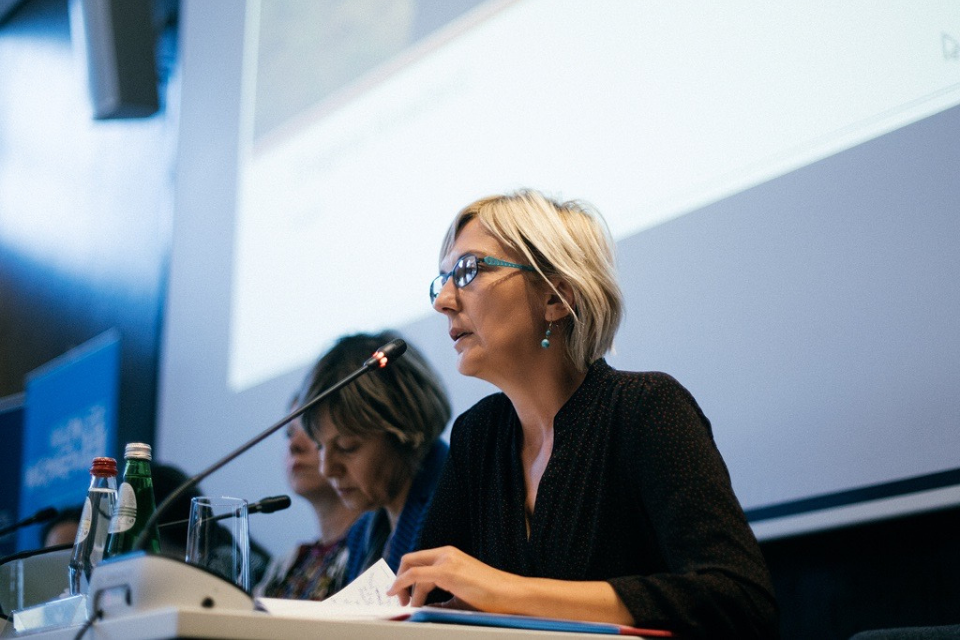Take Five: "Gender-responsive planning is a crucial success factor for improving the situation of rural women"
Date:

Aleksandra Vladisavljevic is a gender-responsive budgeting (GRB) and policy expert who has been actively advocating for gender-responsive planning to be included in all sectors to address gender gaps and structural inequality. She spoke to UN Women about the situation of rural women in Serbia and how GRB is a tool to help improve their quality of life. She is working with UN Women in Serbia on institutionalizing the approach under the regional project “Transformative financing for gender equality towards more transparent, inclusive and accountable governance in the Western Balkans”, which is funded by the Government of Sweden (SIDA).
Based on your extensive experience working with rural women in Serbia on different initiatives, what are the key opportunities?
In Serbia, women in rural areas are the most progressive yet the most neglected group in the country. Supporting rural women’s organizations and their initiatives has proven to contribute to significant changes in the quality of life of women in rural areas. These initiatives include organizing trainings, launching much-needed missing services, initiating activities to combat violence against women, setting up cooperatives and social businesses for employment and self-employment, and becoming active in local communities. The women supported by these initiatives travel together, connect with other women, and establish networks. They bring new knowledge and skills to their villages and offer innovative ideas in agriculture and tourism. They are interested and active in the digital and green economy. Supporting their development and sustaining their ideas is a great opportunity to improve their position.
What are the key challenges that rural women in Serbia face?
The challenges are two-fold. On the one hand, regional differences in development in Serbia are considerable, so access to various services is a challenge, especially in smaller or remote municipalities where villages are scattered. The lack of essential road infrastructure, public transport, access to the Internet, access to education, health, and welfare services influences the quality of daily lives of both women and men in rural areas.
On the other hand, a profound gender gap further reduces women’s chances of realizing their rights or exploiting their full potential. They have less access to and ownership of the private resources necessary for economic empowerment, such as arable land and property. Lack of childcare and elder-care services in these areas puts an additional burden on women, leaving less time for paid work and entrepreneurial opportunities. Women depend more on public transport, which influences their chances of participating in social and cultural life and access to justice and protection from violence.
How did the COVID-19 pandemic impact their situation?
The pandemic has brought additional difficulties to women in the countryside. On the one hand, they were left without incomes through seasonal work or selling in markets. They had particular challenges in ensuring uninterrupted schooling for their children due to unequal access to the Internet. The volume of unpaid household chores increased further due to care for children, elderly or sick family members.
On the other hand, innovative services have been launched in areas where women’s associations operated, showing us their vital role in our communities in a time of crisis. They organized learning assistance for children, psychosocial support for citizens, and online sales and product delivery to nearby cities to help women secure income.
How can gender responsive budgeting be used as a tool to improve rural women’s position?
The primary purpose of GRB is to identify how current policies, programmes and measures financed through public budgets are deepening the gender gap, as well as what needs to be done so that policy and planning can be more gender responsive. Given the complex, multisectoral nature of rural development, the integration of gender aspects is essential. GRB can offer a great deal of help in such an environment. It ensures gender-responsive policy and planning, with the allocation of resources to reduce gender gaps.
So far, what has been the experience with implementing GRB in Serbia?
It has been five years since the beginning of mandatory GRB in Serbia and significant results have been achieved. In our 2021 budget, 42 direct budget-users at the national level and all 26 at the provincial level have applied GRB in their budgets and objectives. However, for the approach to bring about a sustainable, positive change in a society, it is necessary to learn from missed opportunities for deepening GRB. In particular, this can be done by articulating more gender-transformative GRB goals and indicators through more decisive investments in equality and by closing the documented gender gap in all sectors.